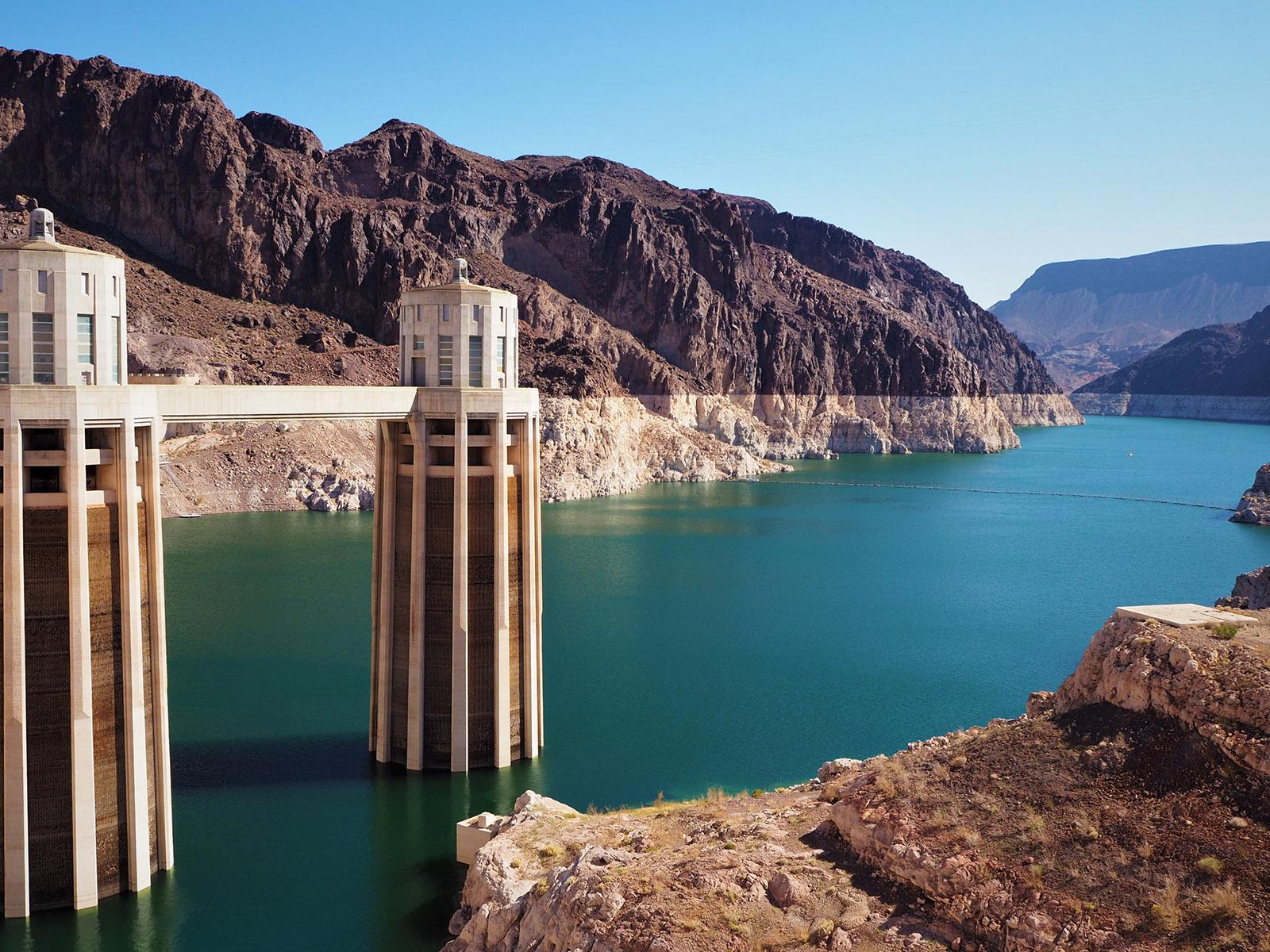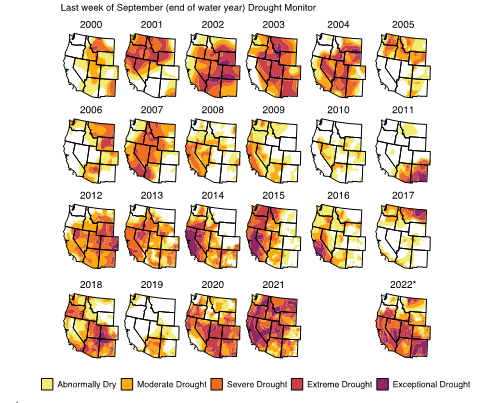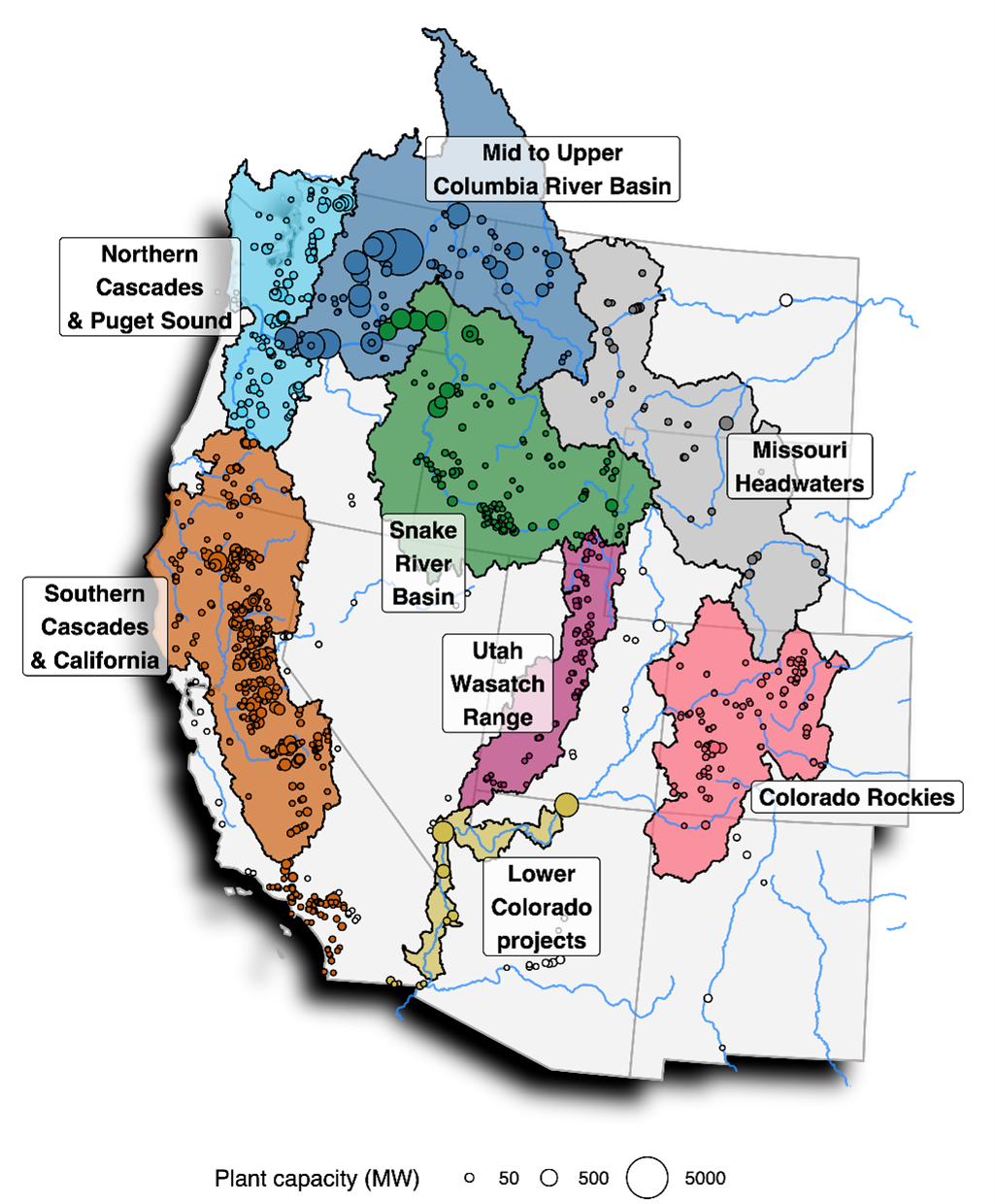Drought Impacts on Hydroelectric Power Generation in the Western United States
Drought Impacts on Hydroelectric Power Generation in the Western United States
Researchers at Pacific Northwest National Laboratory (PNNL) are examining the resilience of the western hydropower fleet to extreme drought. Studies include a retrospective analysis of more than two decades of data recorded at over 600 hydroelectric power plants across 11 states. Other studies consider future impacts to western hydropower under evolving climate conditions.

Drier conditions, such as those pictured here at Hoover Dam, could affect future hydroelectric power generation in the region.
(Photo by Katarzyna Przygodzka | Shutterstock.com)




